It looks like you're using an Ad Blocker.
Please white-list or disable AboveTopSecret.com in your ad-blocking tool.
Thank you.
Some features of ATS will be disabled while you continue to use an ad-blocker.
19
share:
Hello ATS!
Probably, while humanity exists, more and more meanings and codes will be sought on the canvases of the great artists of the Italian Renaissance. It is not known exactly which of this is true, but the search for the hidden messages of geniuses in their immortal works continues constantly. And more and more often not without success.
Geniuses, as a rule, are multifaceted and skill in one area of art is not limited. Sculpture, architecture, painting, music, engineering inventions - all these are the areas in which the great Italian Leonardo da Vinci worked and became famous for centuries.
In addition, it is believed that even in one of his work, a genius could lay a mix of different types of art.
So, the humble Italian composer (according to some sources, a computer technician) Giovanni Maria Pala suggested that the great master could encrypt melodies in his works. And he began to study in detail his fresco "The Last Supper". We all remember the movie The Da Vinci Code. Probably, he connected intuition, secret knowledge, a burning desire to discover something. The musician puzzled over the hidden code for four years. And yet he succeeded.
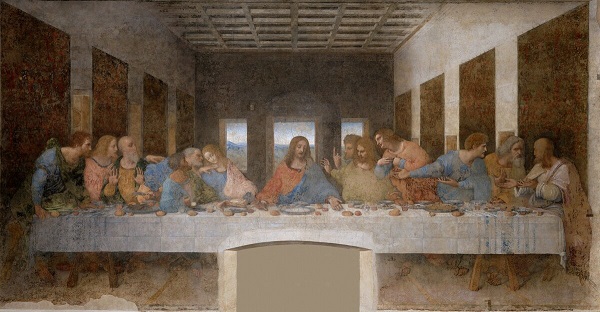
He saw encrypted notes in some of the details of the painting. In particular, he saw the notes in the hands of the Apostles and in the bread depicted on the table. As the enthusiast himself explained:
"The hidden music in the fresco arises if we take into account the relationship between the loaves and the hands of the apostles. This connection is quite justified, since the bread symbolizes the body of Christ, and the hands are the instrument of the Eucharist, the consecration of bread."
He added a stave to the image and tried to play a melody. However, it was complete confusion and dissonance. Nothing even like harmony came of it. But Giovanni did not give up. He continued to peer into the picture and analyze what was in the air, but did not put on form in any way.
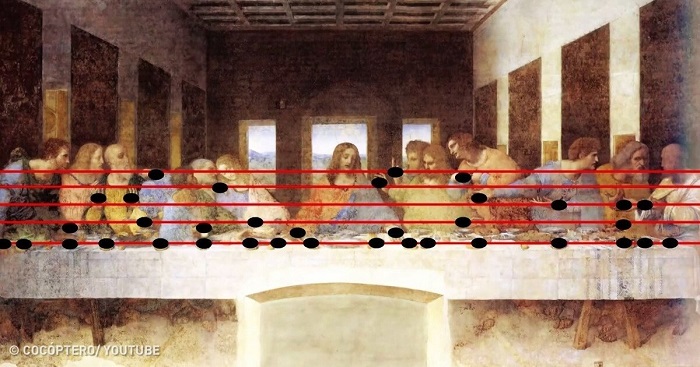
And then it dawned on him: he must play the melody from right to left, just as Leonardo da Vinci himself wrote in his diaries. And the melody sounded ... He still worked on the duration of each note, and 40 seconds "Hymn to the Lord" (that's what Giovanni called his discovery) was ready.
I must say that even the most skeptical critics have recognized the perfect harmony of this melody. It is slow, dramatic, as if predicting the coming tragic events. In the opinion of the composer who discovered it himself:
"The melody sounds like a requiem. It's like a soundtrack highlighting the suffering of Jesus.
According to Giovanni Maria Pala, this composition sounds best in organ performance."
After the melody was heard, many admitted that such music could not accidentally appear in the picture.
Giovanni Maria Pala even published the book "Hidden Music", where he spoke in detail about the work on his discovery and what exactly helped him to make it:
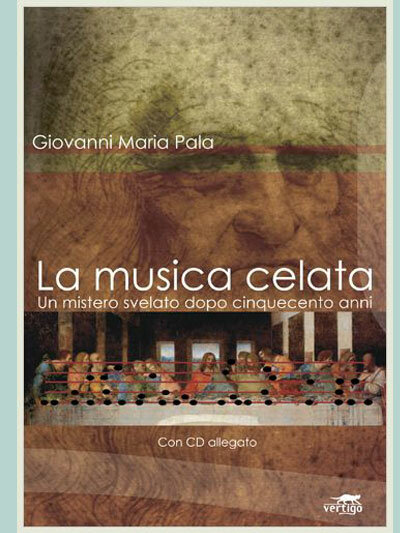
However, most continue to be skeptical about such a discovery, believing that the author wanted to become famous in the wake of the outbreak of interest in da Vinci's works after the scandalous novel by Dan Brown.
Who knows, perhaps Leonardo da Vinci really left some additional meanings in the picture, for example, in the form of a melody. Indeed, according to the historical fact, the artist wrote The Last Supper for a long time - three years. At the same time, most of the time he just stood looking at the wall. The abbot of the monastery even accused the artist of laziness. Leonardo was only left alone after he threatened to paint Judas with the face of the abbot.
What do you think about the discovery of the encrypted melody in the Last Supper fresco?
Thanks.
Probably, while humanity exists, more and more meanings and codes will be sought on the canvases of the great artists of the Italian Renaissance. It is not known exactly which of this is true, but the search for the hidden messages of geniuses in their immortal works continues constantly. And more and more often not without success.
Geniuses, as a rule, are multifaceted and skill in one area of art is not limited. Sculpture, architecture, painting, music, engineering inventions - all these are the areas in which the great Italian Leonardo da Vinci worked and became famous for centuries.
In addition, it is believed that even in one of his work, a genius could lay a mix of different types of art.
So, the humble Italian composer (according to some sources, a computer technician) Giovanni Maria Pala suggested that the great master could encrypt melodies in his works. And he began to study in detail his fresco "The Last Supper". We all remember the movie The Da Vinci Code. Probably, he connected intuition, secret knowledge, a burning desire to discover something. The musician puzzled over the hidden code for four years. And yet he succeeded.

He saw encrypted notes in some of the details of the painting. In particular, he saw the notes in the hands of the Apostles and in the bread depicted on the table. As the enthusiast himself explained:
"The hidden music in the fresco arises if we take into account the relationship between the loaves and the hands of the apostles. This connection is quite justified, since the bread symbolizes the body of Christ, and the hands are the instrument of the Eucharist, the consecration of bread."
He added a stave to the image and tried to play a melody. However, it was complete confusion and dissonance. Nothing even like harmony came of it. But Giovanni did not give up. He continued to peer into the picture and analyze what was in the air, but did not put on form in any way.

And then it dawned on him: he must play the melody from right to left, just as Leonardo da Vinci himself wrote in his diaries. And the melody sounded ... He still worked on the duration of each note, and 40 seconds "Hymn to the Lord" (that's what Giovanni called his discovery) was ready.
I must say that even the most skeptical critics have recognized the perfect harmony of this melody. It is slow, dramatic, as if predicting the coming tragic events. In the opinion of the composer who discovered it himself:
"The melody sounds like a requiem. It's like a soundtrack highlighting the suffering of Jesus.
According to Giovanni Maria Pala, this composition sounds best in organ performance."
After the melody was heard, many admitted that such music could not accidentally appear in the picture.
Giovanni Maria Pala even published the book "Hidden Music", where he spoke in detail about the work on his discovery and what exactly helped him to make it:

However, most continue to be skeptical about such a discovery, believing that the author wanted to become famous in the wake of the outbreak of interest in da Vinci's works after the scandalous novel by Dan Brown.
Who knows, perhaps Leonardo da Vinci really left some additional meanings in the picture, for example, in the form of a melody. Indeed, according to the historical fact, the artist wrote The Last Supper for a long time - three years. At the same time, most of the time he just stood looking at the wall. The abbot of the monastery even accused the artist of laziness. Leonardo was only left alone after he threatened to paint Judas with the face of the abbot.
What do you think about the discovery of the encrypted melody in the Last Supper fresco?
Thanks.
Really love your posts and perspectives!
I have a working theory that the many "classics" that we learn about, and if lucky study, are classics for the fact that they contain hidden messages.
I guess I am that CT. I believe the elite few...not talking modern Gates or Bezos or their ilk....but the ones who really control things and we have no idea who they are, pass those messages to their future leaders this way. It looks innocent to those who don't know how to interpret them.
This short article alludes to what I mean.
www.bbc.com...
The melody was haunting. I liked it.
I have a working theory that the many "classics" that we learn about, and if lucky study, are classics for the fact that they contain hidden messages.
I guess I am that CT. I believe the elite few...not talking modern Gates or Bezos or their ilk....but the ones who really control things and we have no idea who they are, pass those messages to their future leaders this way. It looks innocent to those who don't know how to interpret them.
This short article alludes to what I mean.
www.bbc.com...
The melody was haunting. I liked it.
edit on 10-11-2021 by theatreboy because: (no reason given)
edit on 10-11-2021 by
theatreboy because: (no reason given)
It seems perfectly reasonable, given the genius that Leonardo was. The tune sounds a bit lugubrious to my ears...
originally posted by: theatreboy
Really love your posts and perspectives!
I have a working theory that the many "classics" that we learn about, and if lucky study, are classics for the fact that they contain hidden messages.
I guess I am that CT. I believe the elite few...not talking modern Gates or Bezos or their ilk....but the ones who really control things and we have no idea who they are, pass those messages to their future leaders this way. It looks innocent to those who don't know how to interpret them.
This short article alludes to what I mean.
www.bbc.com...
The melody was haunting. I liked it.
I would not confuse geniuses who work for human development in all spheres with geniuses making a profit at any cost. The latter can use the genius of the former, but it will be just an imitation.
a reply to: RussianTroll
Very good point. I would put forward that many geniuses come up with great things that are then used for bad things.
Very good point. I would put forward that many geniuses come up with great things that are then used for bad things.
a reply to: RussianTroll
I would not say this persons findings are out of the realm of possibility, but I will say there's a good possibility that a desire to find something there for four years and a bit of pareidolia may have contributed to his discovery.
Example: The following image is a picture of a stone circle from above. I can't remember the exact location, but it can be found using the coordinates at the bottom. It is irrelevant for this example...
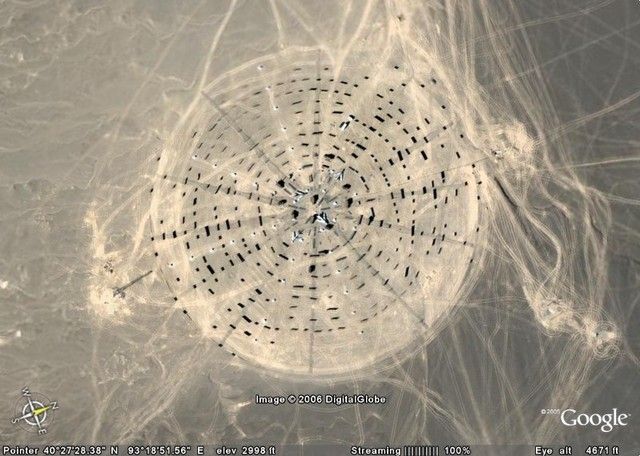
In this image, I can easily see a crude replica of the way a laser writes information to a cd/dvd...
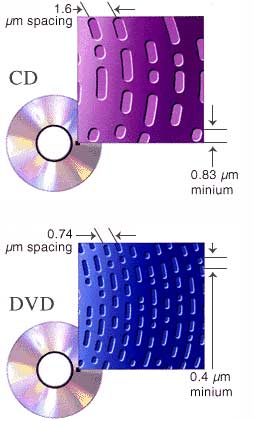
Were the ancients familiar with this method of recording information? Maybe, but it's unlikely. It's more likely just my brain seeing a pattern I recognize. Just my two shillings.
I would not say this persons findings are out of the realm of possibility, but I will say there's a good possibility that a desire to find something there for four years and a bit of pareidolia may have contributed to his discovery.
Example: The following image is a picture of a stone circle from above. I can't remember the exact location, but it can be found using the coordinates at the bottom. It is irrelevant for this example...

In this image, I can easily see a crude replica of the way a laser writes information to a cd/dvd...

Were the ancients familiar with this method of recording information? Maybe, but it's unlikely. It's more likely just my brain seeing a pattern I recognize. Just my two shillings.
a reply to: RussianTroll
That didn't sound like 432hz, it sounded 440hz. If the work is to be rendered properly, it would have to be in the scale of the time which is 432hz. It's a similar problem with trying to play an original non-modified stradivarius violin, the scale is 432hz and our new scale is 440hz.
And actually, if you align a single 432hz octave with light frequencies (~450nm to ~680nm), you find that the frequencies of visible light fall exactly into a transposed 432hz octave using the standard frequency transitioning algorithms. I wrote a program to work that out for one of my clients and to be honest, I was very surprised that the frequencies of different colors corresponded directly to musical notes.
Cheers - Dave
That didn't sound like 432hz, it sounded 440hz. If the work is to be rendered properly, it would have to be in the scale of the time which is 432hz. It's a similar problem with trying to play an original non-modified stradivarius violin, the scale is 432hz and our new scale is 440hz.
And actually, if you align a single 432hz octave with light frequencies (~450nm to ~680nm), you find that the frequencies of visible light fall exactly into a transposed 432hz octave using the standard frequency transitioning algorithms. I wrote a program to work that out for one of my clients and to be honest, I was very surprised that the frequencies of different colors corresponded directly to musical notes.
Cheers - Dave
a reply to: RussianTroll
The Last Supper was painted by a man, a flawed human being just like you or me, maybe a good bit stranger in some way's however and yes he may have been a genius and hidden many secrets in some of his work's.
But what about images believed to be of Divine Origin (I believe they are anyway).
The Icon of the Virgin Mary in Mexico City for example.
The apparition of a young woman whom identified herself as the Mother of the TRUE God appeared to a native peasant farmer whom was a Christian convert by the name of Huan Diego on a hill called Tepeyac which was after this miracle turned into a Christian Basilica though it took the miracle to convince the Bishop to consecrate the site and build a Church there.
Here is a condensed version of his story.
www.catholiceducation.org...
The image has curved reflections in it's eye's of people looking at it, the pattern of the stars on the robe corresponds to the exact night sky at the time of it's appearance and it has music embedded in the image, there are a great many other miracles such as the time a Mexican revolutionary placed a bomb under the alter, the bomb exploded and blew the alter to pieces but no one in the crowded church or the image itself were harmed, the fact that it is made of cactus cloth that seldom lasts more than a few years yet until the 20th century it was on display with no form of protection yet has not degraded at all and in fact when an accident occurred when some cleaners spilled a chemical on the cloth damaging it the cloth has somehow repaired itself.
They also found music encoded into the pattern of the stars and symbols on her robe.
This is the melody played on a harp
This is a softer version made using synthesisers.
I have tried to avoid overtly Catholic interpretation simply because I believe these miracles are for all Christians though they have often appeared when and where they were needed most either at the time of there appearance or to be ready for the time when they would speak to believers in there hearts.
The Last Supper was painted by a man, a flawed human being just like you or me, maybe a good bit stranger in some way's however and yes he may have been a genius and hidden many secrets in some of his work's.
But what about images believed to be of Divine Origin (I believe they are anyway).
The Icon of the Virgin Mary in Mexico City for example.
The apparition of a young woman whom identified herself as the Mother of the TRUE God appeared to a native peasant farmer whom was a Christian convert by the name of Huan Diego on a hill called Tepeyac which was after this miracle turned into a Christian Basilica though it took the miracle to convince the Bishop to consecrate the site and build a Church there.
Here is a condensed version of his story.
www.catholiceducation.org...
The image has curved reflections in it's eye's of people looking at it, the pattern of the stars on the robe corresponds to the exact night sky at the time of it's appearance and it has music embedded in the image, there are a great many other miracles such as the time a Mexican revolutionary placed a bomb under the alter, the bomb exploded and blew the alter to pieces but no one in the crowded church or the image itself were harmed, the fact that it is made of cactus cloth that seldom lasts more than a few years yet until the 20th century it was on display with no form of protection yet has not degraded at all and in fact when an accident occurred when some cleaners spilled a chemical on the cloth damaging it the cloth has somehow repaired itself.
They also found music encoded into the pattern of the stars and symbols on her robe.
This is the melody played on a harp
This is a softer version made using synthesisers.
I have tried to avoid overtly Catholic interpretation simply because I believe these miracles are for all Christians though they have often appeared when and where they were needed most either at the time of there appearance or to be ready for the time when they would speak to believers in there hearts.
Has anyone attempted to create a cd/dvd of the stone circle?
Interesting find.
Interesting find.
new topics
-
Mike Tyson returns 11-15-24
World Sports: 4 hours ago -
HHS Spent Hundreds of Millions of Dollars on DEI Initiatives Under Biden, Watchdog Finds
US Political Madness: 5 hours ago -
Breaking: FBI Agents Raid Polymarket CEO After Betting Site Predicts Trump Win
General Conspiracies: 5 hours ago -
The Guardian quits Elon Musk's X social media platform
Mainstream News: 6 hours ago -
Thune selected as Senate Republican Leader
US Political Madness: 8 hours ago -
Band of Brothers 2001 Classic
Television: 8 hours ago -
US warship Edsall Lost after Pearl Harbor Attack Found 80 Years Later ... by Accident
Mainstream News: 9 hours ago -
WATCH LIVE: US Congress hearing on UFOs, unidentified anomalous phenomena
Aliens and UFOs: 11 hours ago -
Worlds Behind You…
Short Stories: 11 hours ago -
Con Man Don
Jokes, Puns, & Pranks: 11 hours ago
top topics
-
Breaking: FBI Agents Raid Polymarket CEO After Betting Site Predicts Trump Win
General Conspiracies: 5 hours ago, 18 flags -
How can you defend yourself when the police will not tell you what you did?
Posse Comitatus: 15 hours ago, 17 flags -
The Guardian quits Elon Musk's X social media platform
Mainstream News: 6 hours ago, 15 flags -
US warship Edsall Lost after Pearl Harbor Attack Found 80 Years Later ... by Accident
Mainstream News: 9 hours ago, 13 flags -
Thune selected as Senate Republican Leader
US Political Madness: 8 hours ago, 13 flags -
HHS Spent Hundreds of Millions of Dollars on DEI Initiatives Under Biden, Watchdog Finds
US Political Madness: 5 hours ago, 10 flags -
Band of Brothers 2001 Classic
Television: 8 hours ago, 7 flags -
WATCH LIVE: US Congress hearing on UFOs, unidentified anomalous phenomena
Aliens and UFOs: 11 hours ago, 7 flags -
Worlds Behind You…
Short Stories: 11 hours ago, 4 flags -
Mike Tyson returns 11-15-24
World Sports: 4 hours ago, 2 flags
active topics
-
US warship Edsall Lost after Pearl Harbor Attack Found 80 Years Later ... by Accident
Mainstream News • 12 • : CosmicFocus -
Thune selected as Senate Republican Leader
US Political Madness • 66 • : CriticalStinker -
The Trump effect 6 days after 2024 election
2024 Elections • 104 • : NoCorruptionAllowed -
President-Elect Donald Trump will Meet with Coup-Victim JOE BIDEN on Wed 11.13.2024.
2024 Elections • 31 • : WeMustCare -
Trump picks Gov. Kristi Noem to serve as homeland security secretary
2024 Elections • 35 • : xuenchen -
Speaker Johnson Orders Entire Biden Administration to Preserve and Retain All Records - Documents
US Political Madness • 69 • : 777Vader -
Mike Tyson returns 11-15-24
World Sports • 7 • : Hypntick -
Should we look for the truth, or just let it go?
US Political Madness • 102 • : chr0naut -
The Guardian quits Elon Musk's X social media platform
Mainstream News • 14 • : Dandandat3 -
Elon's Starlink Stole The Election For Trump--Leftist Conspiracy Theorists Charge
General Conspiracies • 33 • : 777Vader
19
